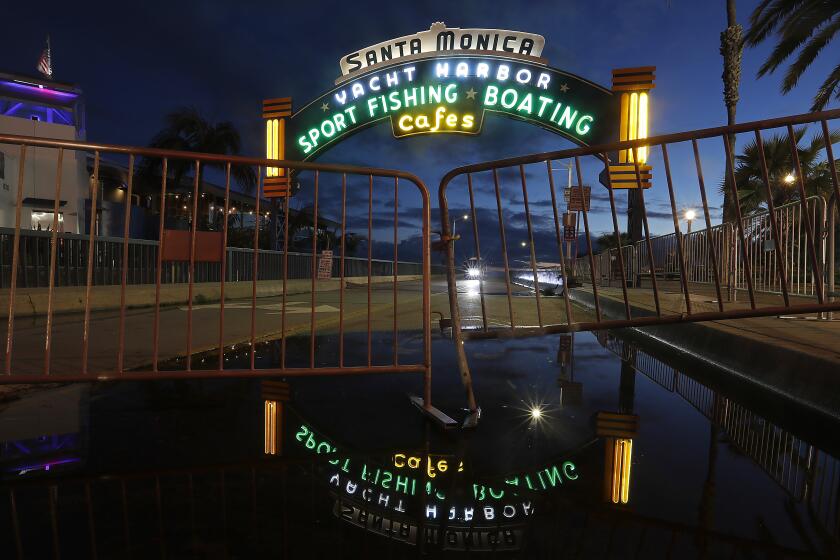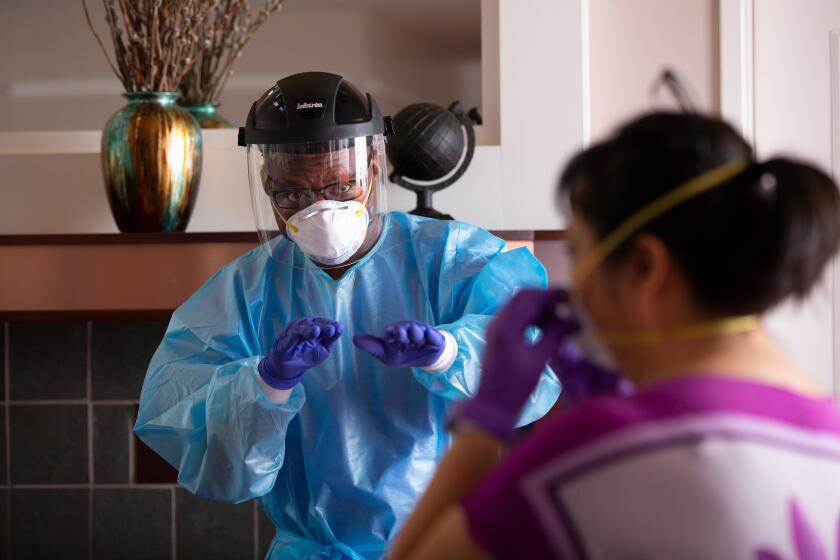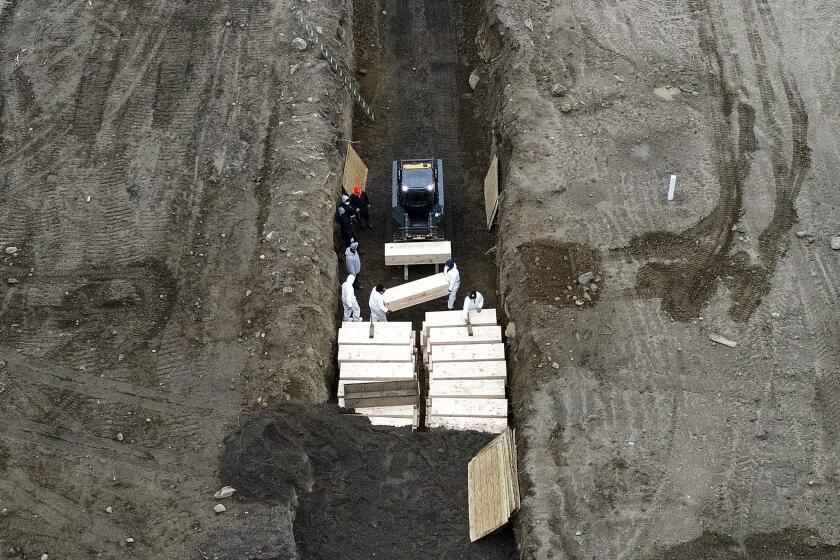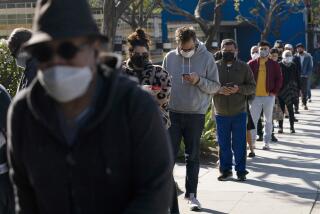California’s coronavirus death toll is way below New York’s. Here’s why
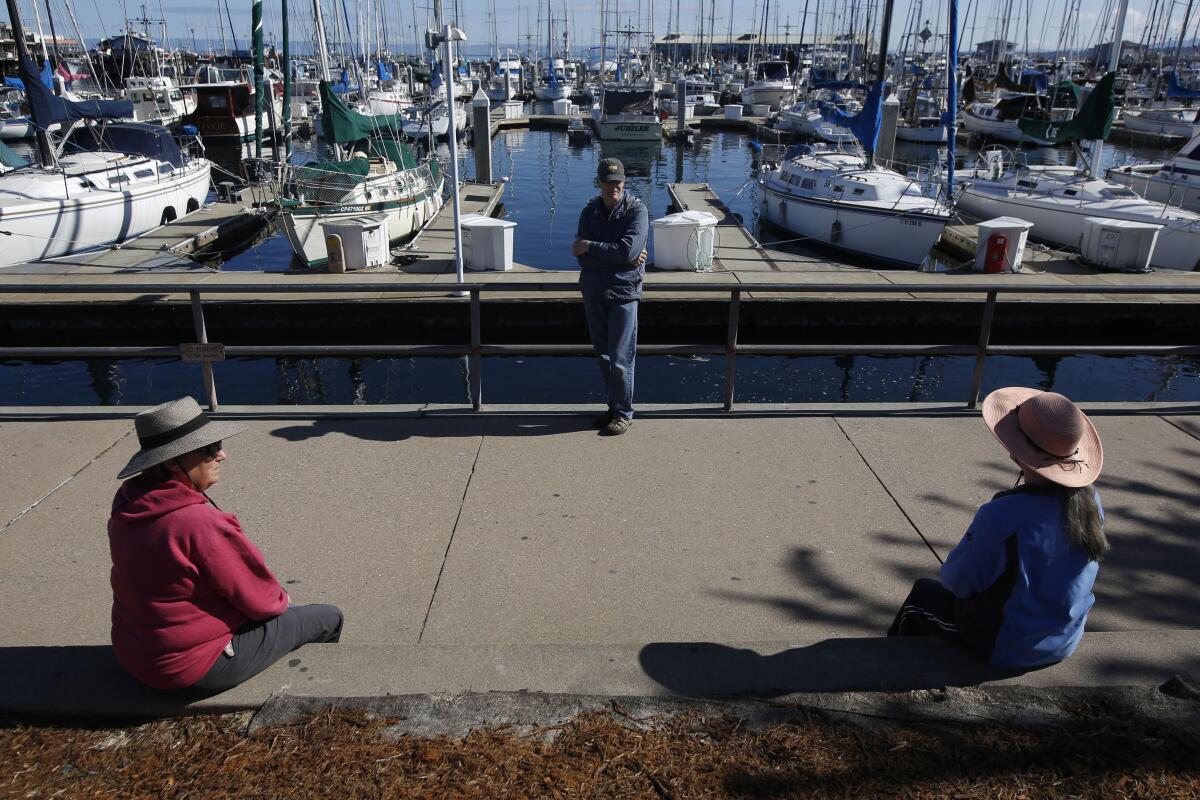
- Share via
California’s relatively quick action to close businesses and order residents to stay home has tamped down the coronavirus pandemic and left many hospitals largely empty, waiting for a surge that has yet to come.
The initial success of the unprecedented shutdown of schools, businesses and other institutions has pleased experts and public health officials, prompting calls to keep the restrictions in place, at least into May, to help cement the progress.
By late Friday, California had reported 598 deaths over two and a half months, fewer than New York experienced in a single day Wednesday, when 799 in the Empire State died from COVID-19, the disease caused by the virus. California has averaged just under 45 deaths per day over the last week, with no spike in fatalities.
New York became the epicenter of the disease in America because of several factors. The virus arrived there earlier than elsewhere and in more locations; it is denser than any other U.S. city; it depends more on public transportation, putting people close to one another; and it was behind California and Washington state in imposing restrictions on public movement, said Nicholas Jewell, a UC Berkeley biostatistician.
Jewell and his daughter, Britta, an infectious disease epidemiologist in London, created a model of the pathogen that showed the timing of social distancing orders played a critical role in controlling the number of deaths from the contagion.
Eerie photos and stunning aerial shots show what California looks like under Gov. Newsom’s “stay at home” order.
“Just putting those controls in place a single day earlier makes a huge, huge difference in the growth rates,” Nicholas Jewell said. “And two days earlier makes an even bigger difference.”
Seven counties in the greater San Francisco Bay Area ordered residents to “shelter in place” and all but essential businesses to close at midnight on March 16, a day when the number of coronavirus deaths in California doubled from six to 12. Three days later, Gov. Gavin Newsom extended the order to the entire state, with the total death toll at just 19.
New York Gov. Andrew Cuomo made a similar order on March 20, but it did not take effect until Sunday, March 22, at 8 p.m. By then, his state already had recorded at least 150 deaths. That action still preceded lockdowns across much of the nation. Florida Gov. Ron DeSantis didn’t impose a stay-at-home order until April 1.
In California, the effect of the early order appears pronounced. San Francisco had recorded 13 deaths through Friday, adding one to three additional victims per day over the last week. Sacramento has counted 24 deaths. Orange County has not seen its death toll of 17 increase for three days.
And, after emerging as an early epicenter of the illness, Santa Clara County had totaled 50 deaths through Friday, an increase of 11 in one week.
The state’s most populous county, Los Angeles, continued to record the biggest share of fatalities, with a total of 244 as of Friday. But the average of 22 deaths-per-day over the previous week included no notable spikes.
The latest maps and charts on the spread of COVID-19 in California.
“Physical distancing is working. It has worked to date, and it is working now, and it is important that that physical distancing remain in place in order to reduce not just the strain on the hospital system, but more importantly the overall number of infections,” said Dr. Christina Ghaly, director of the L.A. County Department of Health Services. “It is absolutely the single most important weapon that we have in our arsenal to fight the virus.”
The early action appeared evident in the empty hallways and wards of hospitals around California.
Ronald Reagan UCLA Medical Center in Westwood has been has been unusually quiet, said an attending physician, who wasn’t authorized to speak publicly. Patients have been admitted, but few.
“It’s almost like ominous,” he said. “The volume has been the lowest it’s been ever.”
There are currently 41 COVID-19 patients admitted to the hospital, a figure that appears to have plateaued in recent days, according to the university’s dashboard. The doctor said they are encouraged by the state numbers, but remain anxious.
“Are we just waiting for the peak?” he asked. There had been a “high panic” about a month ago, as doctors and nurses watched television news accounts of overflowing wards in Italy, said the UCLA physician, adding: “Now it’s more like being scared to admit a little bit of confidence, maybe telling everyone … we’ve actually achieved something. We won’t admit to ourselves that we’re out of the woods immediately, until late May.”
The view from a Northern California hospital looked similar.
This week was one of the deadliest the nation has ever seen. These are the stories of front-line workers and victims across America.
An emergency room nurse at Highland Hospital in Oakland said she has never seen her hospital so empty. The trauma center is typically one of the busiest in the state, with an emergency room that can have wait times as long as 15 hours, said the nurse, Kennedy Fleischauer.
“We just are bursting at the seams and we’re always that way, so to have weeks go by when nobody is there, it’s really weird, it’s really unnerving,” Fleischauer said. “It’s eerily not busy.”
The quiet has proved a blessing, allowing the hospital more time to assemble protective equipment for doctors, nurses and other workers.
“Because of that I think there’s been a really big kind of like surge in confidence,” Fleischauer said, “almost like, ‘Now we’re ready, we’re ready to handle this.’”
Doctors around the state still worry that the virus could get a foothold in rest homes, prisons or among the teeming homeless population in places like Los Angeles’ skid row. The early success should not encourage complacency, the experts said.
“The positive news is that we seem to be tamping this down and our peak might be a week away,” said Berkeley’s Jewell. “But we’ll still have to wait three or four weeks after the peak to get back to where we were before the shutdown went in place.”
That timeline would suggest a potential reopening of some businesses and other facilities roughly a week into May.
With mounting COVID-19 deaths, New York shortens the amount of time it will hold unclaimed remains before burying them in the city’s public cemetery.
“There will be political pressure to release things quickly; but epidemiologically, you need to wait longer, if you want to control the timing of a second wave,” Jewell said.
Los Angeles County health officials on Friday extended the end-date of their stay-at-home restrictions from April 19 to at least May 15 and said residents should do even more to rein in their public activities. They advised, in particular, reducing excessive trips to grocery stores, to curtail the spread of the virus, which first emerged publicly in California in January.
Emergency rooms had previously noted a slowdown in other types of cases, particularly car accident victims, because of a sharp decline in the number of people on the road. And a firm tracking influenza like illnesses of all kinds, including COVID-19, showed that case numbers falling sharply around March 19, the day Gov. Gavin Newsom issued his stay-at-home order.
Smart-thermometer maker Kinsa Health showed that on April 9 just 0.3% of Los Angeles County residents had fevers, as associated with both common flu and the coronavirus, compared with an expected 3.2% for that date.
It showed similar numbers for other counties in Southern California, all indicating low levels of observed illness, based on real-time data from the company’s network of smart thermometers.
Times staff writers Nathan Fenno, Rong-Gong Lin II and Melanie Mason contributed to this report.
More to Read
Sign up for Essential California
The most important California stories and recommendations in your inbox every morning.
You may occasionally receive promotional content from the Los Angeles Times.
